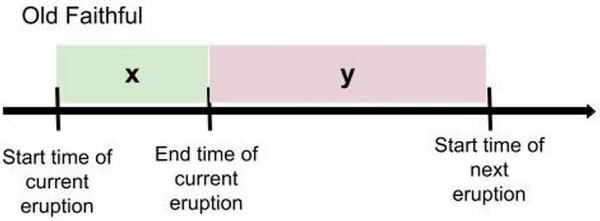Evaluating the predicted eruption times of geysers in Yellowstone National Park
(1) Interlake High School, (2) University of Washington Tacoma
https://doi.org/10.59720/23-162
Yellowstone National Park was the first national park in the United States and is known for its geothermal features, consisting of many popular geysers such as Old Faithful. Geysers are fascinating to national park visitors because their eruptions range from small bubbles to jets of water hundreds of meters high, and their eruptions last from seconds to hours. To help tourists plan their visits, the US National Park Service and other independent groups (such as GeyserTimes) publish predicted eruption times of popular geysers. We hypothesized that the models developed by the US National Park Service are accurate with little discrepancy from our independent analysis, due to park rangers monitoring the geysers constantly and likely adjusting their models over time according to observed patterns and changing conditions underground. In our study, we focused on Old Faithful and Beehive Geyser by downloading eruption time data and conducting statistical regression analyses using linear, exponential, and logistic regression methods, with the ultimate goal of evaluating the accuracy of different statistical models. Contrary to our hypothesis, our results demonstrated that the official predictions from the US National Park Service are variable in accuracy. Specifically, we showed that the predicted eruption times for Old Faithful from the National Park Service and our own regression models are highly consistent, while the official predictions from the National Park Service for Beehive Geyser were less precise than our predictions.
This article has been tagged with: